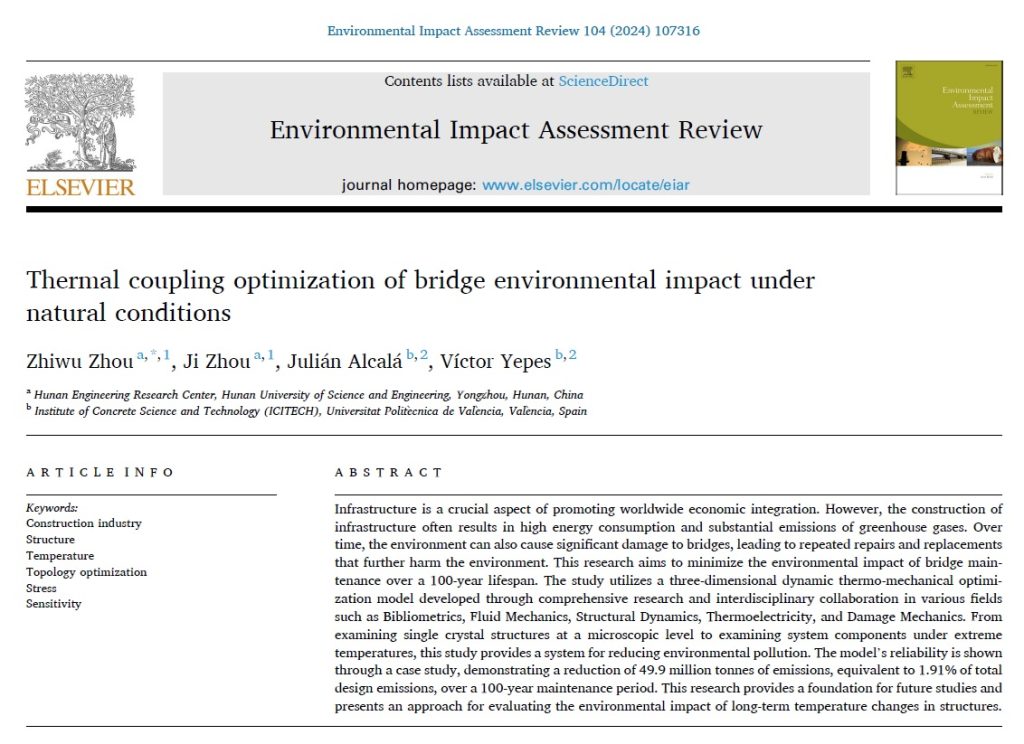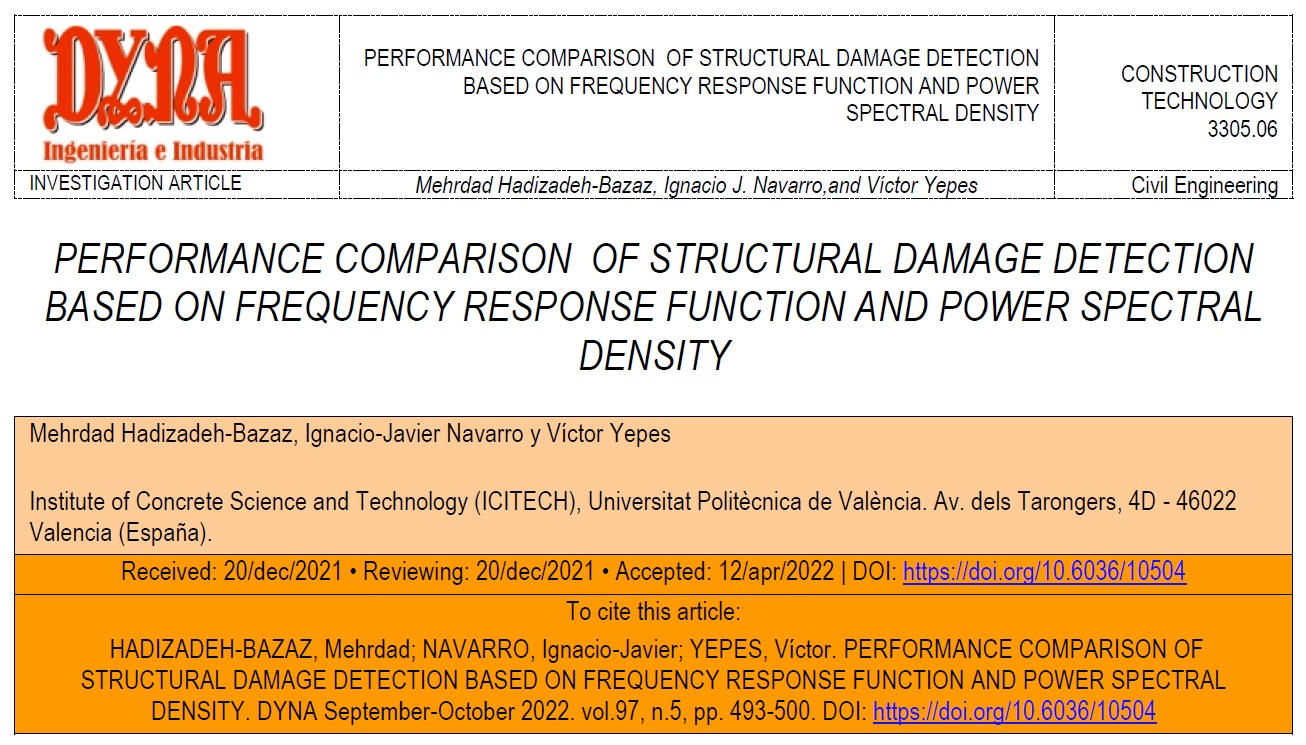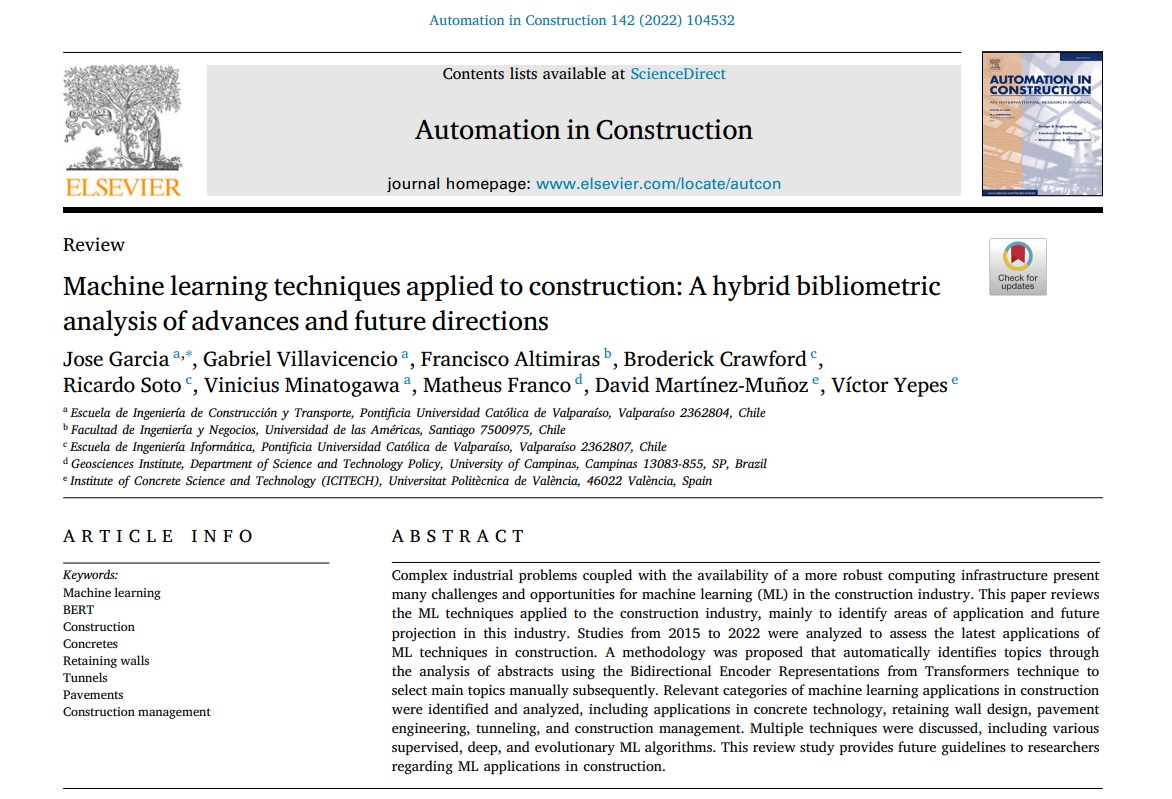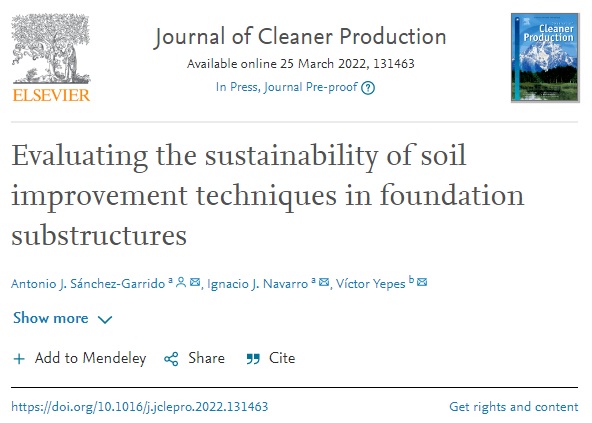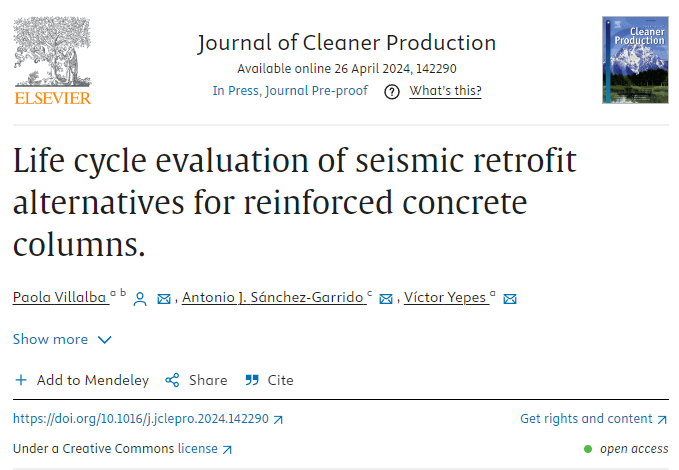 Acaban de publicarnos un artículo en el Journal of Cleaner Production, revista indexada en el primer decil del JCR. El trabajo evalúa las alternativas de reacondicionamiento de columnas de hormigón armado en una región de alto riesgo sísmico, comparando, el recrecimiento de la sección de hormigón, el encamisado de acero y el refuerzo con fibra de carbono. El estudio destaca la importancia de tener en cuenta todas las etapas en la evaluación del ciclo de vida a la hora de rehabilitar edificios, incluidas las consideraciones de diseño, pruebas, construcción, uso y final de la vida útil. El trabajo se enmarca dentro del proyecto de investigación HYDELIFE que dirijo como investigador principal en la Universitat Politècnica de València.
Acaban de publicarnos un artículo en el Journal of Cleaner Production, revista indexada en el primer decil del JCR. El trabajo evalúa las alternativas de reacondicionamiento de columnas de hormigón armado en una región de alto riesgo sísmico, comparando, el recrecimiento de la sección de hormigón, el encamisado de acero y el refuerzo con fibra de carbono. El estudio destaca la importancia de tener en cuenta todas las etapas en la evaluación del ciclo de vida a la hora de rehabilitar edificios, incluidas las consideraciones de diseño, pruebas, construcción, uso y final de la vida útil. El trabajo se enmarca dentro del proyecto de investigación HYDELIFE que dirijo como investigador principal en la Universitat Politècnica de València.
Las contribuciones de este trabajo de investigación son las siguientes:
- Evalúa las alternativas de reacondicionamiento de columnas de hormigón armado en una región de alto riesgo sísmico, comparando el recrecido de hormigón, el encamisado de acero y el refuerzo con fibra de carbono.
- Realiza un análisis exhaustivo para evaluar los impactos económicos y ambientales mediante evaluaciones del ciclo de vida.
- Presenta una jerarquía estructurada de criterios e indicadores para la evaluación de las opciones de modernización, lo que ayuda a los técnicos y a los responsables de la toma de decisiones.
- El encamisado de acero se consideran la mejor opción debido a su rendimiento equilibrado en todos los criterios, mientras que los recrecidos de hormigón se consideran menos favorables debido a su elevado impacto ambiental y funcional. La rehabilitación con fibra de carbono es una alternativa viable con un menor impacto medioambiental y una mayor funcionalidad, a pesar de los importantes costes de las materias primas.
Abstract
The critical earthquakes of the last few years highlight the urgent seismic retrofitting of existing buildings due to their aging or inadequate design. This paper aims to evaluate reinforced concrete column retrofit alternatives in a region of high seismic risk. When deciding between various building retrofit options, significant economic, environmental, and functional factors must be considered. The study uses a cradle-to-grave analysis to examine the economic and environmental impacts through life cycle assessments. Specifically, the life-cycle performance of three classic alternatives for rehabilitating columns lacking adequate confinement is compared: concrete jacketing, steel jacketing, and carbon fiber incorporation. The research adopts a holistic approach using multi-criteria decision-making methods, integrating economic, environmental, and functional criteria. A set of criteria and indicators is presented in a structured hierarchy that facilitates the orderly evaluation of alternatives. The results suggest that steel jacketing is preferred, as it presents a balanced performance in most criteria. The incorporation of carbon fiber is viable due to its low environmental and functional impact, although the high production costs of the raw materials limit it. In contrast, concrete jacketing has the highest environmental and functional impacts, making it the least favorable option. The results of this study will provide relevant information for engineers and decision-makers to select the most suitable options for building retrofit when considering several simultaneous perspectives.
Keywords:
Construction, CFRP, Decision making, Life cycle assessments, MCDM, Retrofit, Sustainable design.
Reference:
VILLALBA, P.; SÁNCHEZ-GARRIDO, A.; YEPES, V. (2024). Life cycle evaluation of seismic retrofit alternatives for reinforced concrete columns. Journal of Cleaner Production, 455:142290. DOI:10.1016/j.jclepro.2024.142290
Os podéis descargar gratuitamente el artículo, pues está publicado en acceso abierto.


